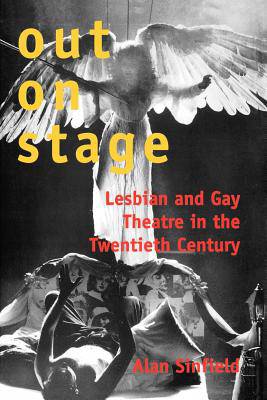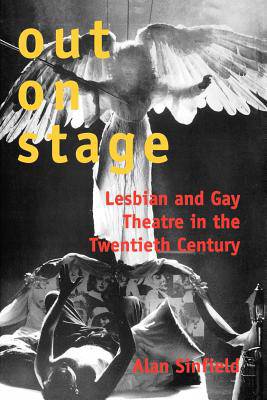
- Afhalen na 1 uur in een winkel met voorraad
- Gratis thuislevering in België vanaf € 30
- Ruim aanbod met 7 miljoen producten
- Afhalen na 1 uur in een winkel met voorraad
- Gratis thuislevering in België vanaf € 30
- Ruim aanbod met 7 miljoen producten
Zoeken
€ 86,45
+ 172 punten
Omschrijving
This intriguing and authoritative book tracks stage representations of lesbians and gay men from Oscar Wilde to the present day. Alan Sinfield argues that, despite and because of censorship and discretion, twentieth-century theater has been viewed as a gay space. When we attune ourselves to the idioms of the different decades, theater emerges as an important place for the circulation of images of homosexuality and for the exploration of concepts of gender and sexuality.
Sinfield examines scores of British and American plays and playwrights, including works by Wilde, Maugham, Coward, Hellman, O'Neill, Rattigan, Williams, Le Roi Jones, and Orton. He locates plays in the contexts in which they were produced and viewed, whether it be West End and Broadway or more bohemian little club theaters, Off-Broadway, and fringe. He discusses many women writers--from Djuna Barnes and Agatha Christie to Lorraine Hansberry and Caryl Churchill--and analyzes the implications of homosexuality in their work. He explains why in the 1950s British and American plays began to differ in their representations of gays, how the 1960s produced an exuberant cultivation of "kinky" humor and gay political activism in theaters, and what impact AIDS has had on theatrical productions. Sinfield concludes with provocative questions about the direction of new theater writing, asserting that representations in theater continue to challenge notions of our sexual potential.
Sinfield examines scores of British and American plays and playwrights, including works by Wilde, Maugham, Coward, Hellman, O'Neill, Rattigan, Williams, Le Roi Jones, and Orton. He locates plays in the contexts in which they were produced and viewed, whether it be West End and Broadway or more bohemian little club theaters, Off-Broadway, and fringe. He discusses many women writers--from Djuna Barnes and Agatha Christie to Lorraine Hansberry and Caryl Churchill--and analyzes the implications of homosexuality in their work. He explains why in the 1950s British and American plays began to differ in their representations of gays, how the 1960s produced an exuberant cultivation of "kinky" humor and gay political activism in theaters, and what impact AIDS has had on theatrical productions. Sinfield concludes with provocative questions about the direction of new theater writing, asserting that representations in theater continue to challenge notions of our sexual potential.
Specificaties
Betrokkenen
- Auteur(s):
- Uitgeverij:
Inhoud
- Aantal bladzijden:
- 416
- Taal:
- Engels
Eigenschappen
- Productcode (EAN):
- 9780300191561
- Verschijningsdatum:
- 1/01/2000
- Uitvoering:
- Paperback
- Formaat:
- Trade paperback (VS)
- Afmetingen:
- 156 mm x 234 mm
- Gewicht:
- 580 g

Alleen bij Standaard Boekhandel
+ 172 punten op je klantenkaart van Standaard Boekhandel
Beoordelingen
We publiceren alleen reviews die voldoen aan de voorwaarden voor reviews. Bekijk onze voorwaarden voor reviews.











